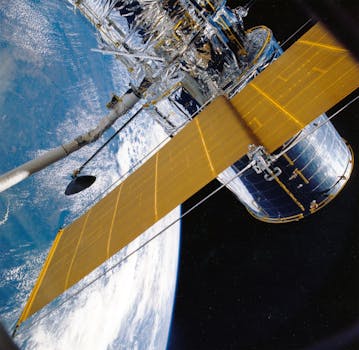
GEO Satellites: Understanding the Technology and Its Applications
GEO satellites, or Geostationary Earth Orbit satellites, are a type of satellite that orbits the Earth at an altitude of approximately 36,000 kilometers. These satellites are designed to remain stationary in the sky, relative to a fixed point on the Earth’s surface, and are used for a variety of applications, including telecommunications, weather forecasting, and navigation. In this article, we will explore the technology and applications of GEO satellites, and examine their importance in modern telecommunications.
GEO satellites are equipped with transponders, which are devices that receive and re-transmit signals. These signals can be used for a variety of purposes, including television broadcasting, internet connectivity, and mobile communications. The signals are transmitted from the satellite to a network of ground stations, which then distribute them to the intended recipients. This allows GEO satellites to provide global coverage, enabling communication and data transmission between different parts of the world.
The History and Development of GEO Satellites
The concept of GEO satellites was first proposed in the 1940s, but it wasn’t until the 1960s that the first GEO satellite was launched. The first commercial GEO satellite, Intelsat 1, was launched in 1965, and was used for telecommunications and television broadcasting. Since then, the technology has advanced significantly, with modern GEO satellites offering higher bandwidth, faster data transmission rates, and more advanced navigation systems.
Today, there are over 500 GEO satellites in orbit, operated by a variety of organizations, including governments, private companies, and international organizations. These satellites play a critical role in modern telecommunications, enabling global communication and data transmission. They are also used for a variety of other applications, including weather forecasting, navigation, and Earth observation.
Applications of GEO Satellites
GEO satellites have a wide range of applications, including telecommunications, television broadcasting, internet connectivity, and mobile communications. They are also used for weather forecasting, navigation, and Earth observation. In addition, GEO satellites are used for a variety of scientific and research applications, including astronomy, geology, and climate change studies.
One of the most significant applications of GEO satellites is in telecommunications. They are used to provide global coverage, enabling communication and data transmission between different parts of the world. This has revolutionized the way we communicate, enabling people to stay in touch with each other, regardless of their location. GEO satellites are also used for television broadcasting, allowing people to access a wide range of channels and programs from around the world.
In addition to telecommunications and television broadcasting, GEO satellites are also used for internet connectivity. They provide a means of accessing the internet in remote and underserved areas, where traditional connectivity options are not available. This has enabled people in these areas to access a wide range of online services, including education, healthcare, and financial services.
Challenges and Limitations of GEO Satellites
Despite the many advantages of GEO satellites, there are also several challenges and limitations associated with their use. One of the main challenges is the high cost of launching and operating a GEO satellite. This can make it difficult for organizations to justify the cost of using GEO satellites, particularly for smaller or less profitable applications.
Another challenge associated with GEO satellites is the risk of signal interference. Because GEO satellites operate at a fixed frequency, there is a risk that signals from other satellites or sources of interference can disrupt the signal. This can cause problems with communication and data transmission, and can also affect the quality of television broadcasts and internet connectivity.
In addition to these challenges, GEO satellites are also subject to a range of environmental and regulatory factors. For example, they must comply with international regulations regarding frequency allocation and signal strength. They are also subject to environmental factors, such as space weather and radiation, which can affect their operation and longevity.